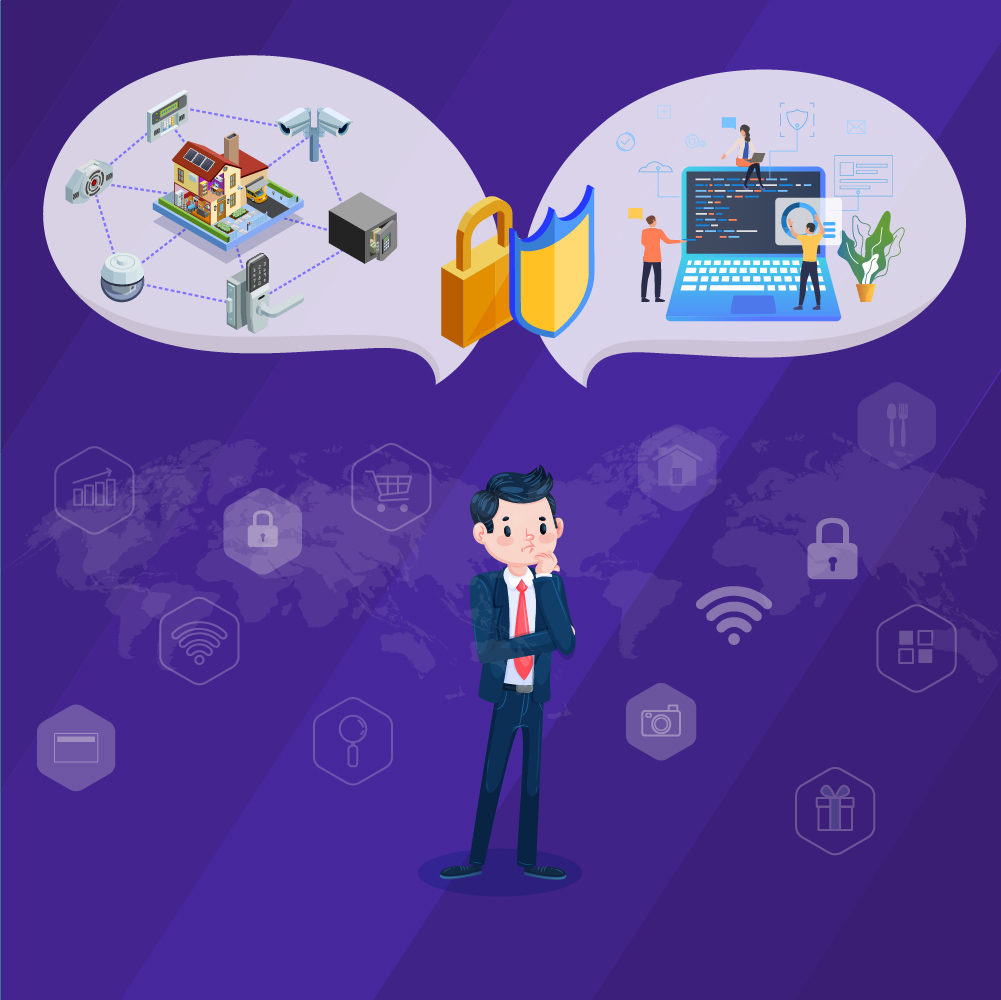Building an IoT platform or choosing the Suitable Platform? What is the best Choice?
IoT is expanding at a fast pace, and decision-makers are at a crossroad. Some are reinventing the wheel—building their platforms while others would instead settle for an already-made infrastructure.
Interacting with an enterprise that is excited to build its own IoT application enablement platform (AEP) opens your eyes to possibilities—at least from their own perspective. The goal is simple— to have total control over the technology it deploys. Thus, it hires developers to build an ideal and cost-effective platform.
And the outcome stares them in the face. At some point, the IoT platform delivers as expected. Other times, the drawbacks are too much to handle, and a concept you once espoused is no longer in your “ideal books.”
So which fits the bill—building an enterprise-grade IoT platform or buying a platform from a third-party vendor? This raises a lot of dust, but we will get to the crux in a bit.
According to a survey conducted by Informa on people whose companies’ utilized IoT projects at production scale, 30% of respondents agree they settled for an off-the-shelf platform, while 24% of respondents built from scratch.
Does that lead us anywhere? Perhaps, we need to understand what we are up against and factors at play.
IoT is heterogeneous—it uses an array of sensors that features differing power, security, and connectivity requirements. Even though most IoT platforms have such diversity in their design, so many companies still tilt towards building their own.
Building an IoT platform requires a lot—in development resources. And that introduces its own problem. You need developers to hang around, build capabilities to the platform and also have enough tasks on their hands to remain employed. That throws in the question of cost and availability of resources—and to even think that there is a finite number of developers in our world create yet another problem.
What about coding languages? The language you rely on today may become obsolete in a few years to come, and you’ll have no choice than to migrate to something else. Such challenges don’t necessarily play out when you buy from a third-party vendor.
However, there are cases where it is beneficial for an enterprise to build a platform instead of buying one. In most cases, you’d be incented to develop an in-house platform if:
- It features a huge deployment size.
- There is a possibility of streaming large quantities of data to the cloud—and not leveraging edge compute capabilities.
- Technology is part of the current core competencies or if it sells technology-related services to its customers.
Again, some factors play out when an enterprise decides to build or buy, and they come in their numbers—time to market, internal competencies, labor, infrastructure, on-going support requirements, competitive environment, etc. They critically affect the enterprise’s platform decision.
Critical Factors to Consider
These factors fall into two classes—quantitative and qualitative factors. These two must be put into perspective in the thick of things—when building or buying an IoT platform. With quantitative factors, you can put a cost to building the platform versus buying it. The qualitative factors help you make sense of the IoT inherent risks.
Quantitative
Hardware
The enterprise will have to purchase IT hardware to get an IoT platform running if the enterprise decides to go with an on-premises deployment.
Infrastructure
Infrastructure here is cloud-based, and an enterprise must have it in place to successfully run an IoT platform which will be available in a third-party provider’s cloud.
SaaS
These are fees that IoT providers charge their customers for using their services. The fees relate to the number of connected devices on their platform, application deployed, or API calls on consumption.
Labor
This is the human resources required to develop and get the IoT platform running. Labor cost can manifest in two categories—design and development labor to conceptualize and develop an IoT solution and support labor for on-the-go maintenance.
Qualitative Factors
Time-to-market
This is the length of time it took an enterprise to launch an IoT solution. This factor is usually affected by the time to develop or build an IoT platform. If your competitor can launch quicker than you, then you’re disadvantaged.
Customization Requirement
IoT solutions use some bespoke technologies. And when an enterprise customizes, that can have a serious impact on time-to-market, increasing risks as regards functionality that exists and continuous support.
Enterprise Competencies
Companies in the IoT space will have to evaluate their readiness to willingly design, develop, test, and deploy resources—even to carry out maintenance for efficient service. Since most companies are not technology inclined, it may be daunting to build an IoT platform.
Complying with Regulation
Adhering to regulatory requirements can have a serious decision on a vendor-provided IoT platform.
On-going Support
The enterprise will consider on-going support from the platform—it could be an internal team, service-providing company, etc— to mitigate future challenges and be abreast of situations.
Now let’s look at it once again: Will it make more business sense for an Enterprise to build or buy an IoT platform?
According to IoT Analytics, enterprises could leverage approximately 50% shorter implementation cycle when they buy IoT platform services. For built-in solution, it may require 6-12 months to hit the ground running, as there are several pieces of research along the way—even setbacks to surmount—before attaining stability.
What it means is that time spent in building an IoT platform causes delay to reap the benefits, with the competitor having a full year of advantage. With the elimination of custom development, you can keep your team’s focus on what you do best—creating high-quality products and services.
Final Thoughts
For enterprises on the path of digital transformation, deciding on a technology building block to develop in-house or buy from a vendor can be tough. But research has it that a sizeable number of enterprises tilt towards a buy decision.
So where do you stand in all of this?
While you decide to leave the traction to some other vendors, ZIN proved to be an expert in building impeccable platforms for big giants in Tech world in past 11 years.



